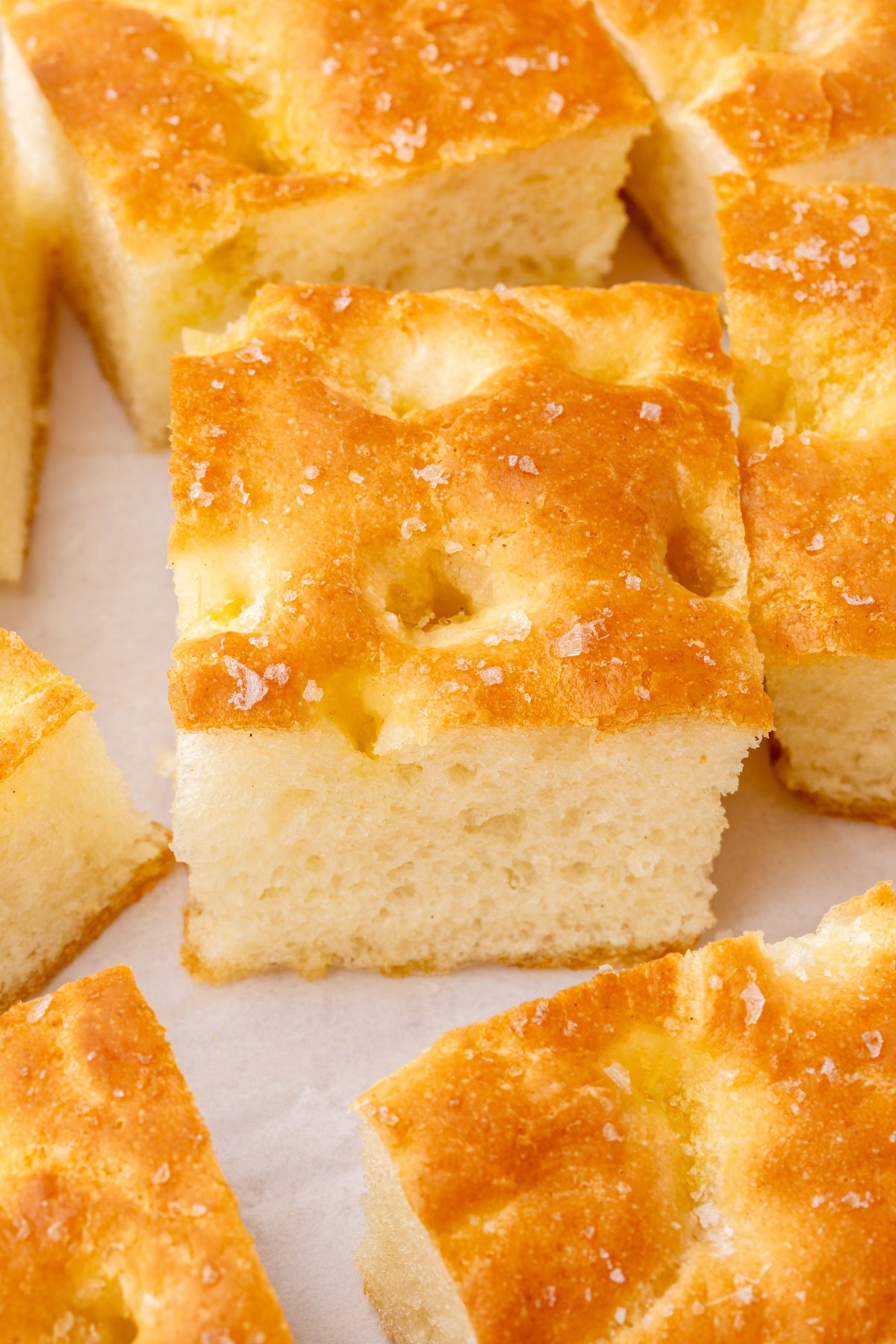
This gluten-free focaccia is soft and airy in the middle with golden, crispy edges — exactly what you want from a bakery-style focaccia, just without the gluten. Made with Caputo Fioreglut flour (a gluten-free baker’s secret weapon), this bread is perfect for slicing into sandwiches, dunking in soup, or enjoying warm with a little olive oil and balsamic.
It’s surprisingly easy to make — no kneading necessary — and it rises beautifully every time.
Why You’ll Love This Recipe
Looking for what to serve with gluten-free focaccia? gluten-free lasagna / gluten-free chicken parmesan / burrata caprese / roasted chicken thighs
Ingredients
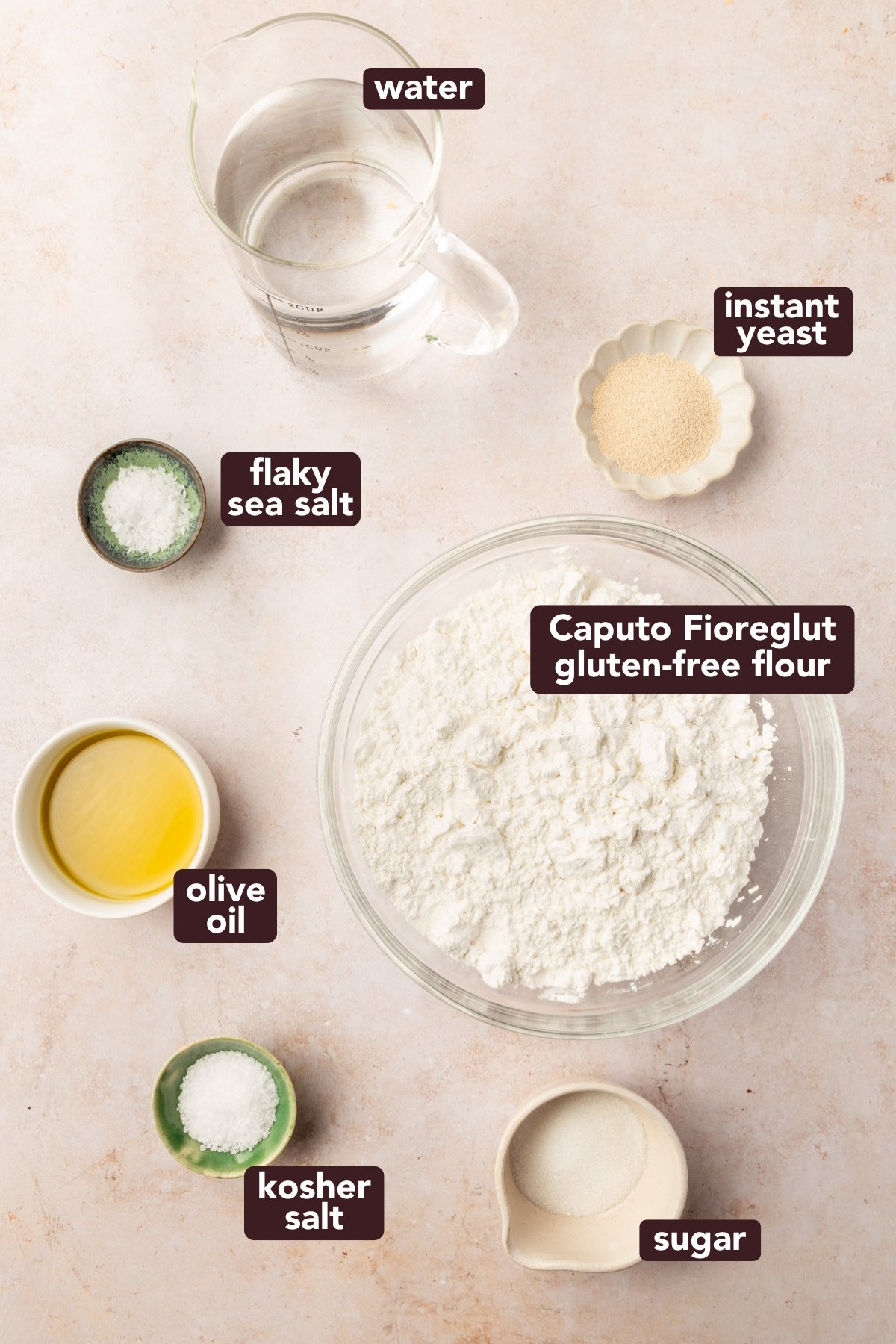
Is yeast gluten-free?
Yes — most instant and active dry yeast is naturally gluten-free. I typically use Red Star, Fleischmann’s, or SAF. Just avoid Red Star Platinum, which contains enzymes derived from wheat. Always check labels to be sure
Ingredient Notes
- Caputo Fioreglut Gluten-Free Flour: What makes Fioreglut unique is that it contains gluten-free wheat starch. This starch is specially processed to remove gluten to below 20 parts per million, making it compliant with gluten-free labeling standards in both the U.S. and the EU. It’s safe for most people with celiac disease, and gives the flour the stretch and bounce that’s hard to achieve with rice or tapioca blends. If you have a wheat allergy, DO NOT use this flour blend as it is not safe for you!
- Water: For best results, heat the water to 120–130°F. Any hotter, and it could kill your yeast.
- Instant Yeast: This recipe uses instant (a.k.a. rapid-rise or quick-rise) yeast, which doesn’t need to be proofed in warm water first — it can be mixed right into the dry ingredients.
- Granulated Sugar: Feeds the yeast and helps kickstart the rise. It doesn’t make the focaccia taste sweet — it just supports fermentation and browning. Do not lower the amount of sugar in the recipe.
- Olive Oil: Adds richness to the dough and helps create that signature crispy, golden crust. You’ll use some in the dough, and the rest for oiling the pan, dimpling the top, and finishing before baking. Do not skimp on the olive oil — it’s essential for that golden, crisp-edged focaccia.
- Salt: This recipe uses both kosher salt (in the dough) and flaky sea salt (on top). They’re not interchangeable. The kosher salt builds flavor in the dough, while the flaky salt gives those beautiful, salty pops on the surface. You want both.
For the ingredient list with measurements, full instructions, printable recipe, and additional notes, please scroll down to the recipe card.
Recipe FAQs
This recipe was developed specifically for Caputo Fioreglut. Other blends will not produce the same texture or structure.
Gluten-free wheat starch is wheat that has had the gluten removed during processing. It’s tested to ensure it contains less than 20 parts per million (ppm) of gluten, which meets FDA and EU gluten-free standards. Caputo Fioreglut uses this starch to mimic the texture of traditional wheat-based doughs. Most people with celiac disease can safely consume it — but if you have a wheat allergy, this flour isn’t the right choice for you.
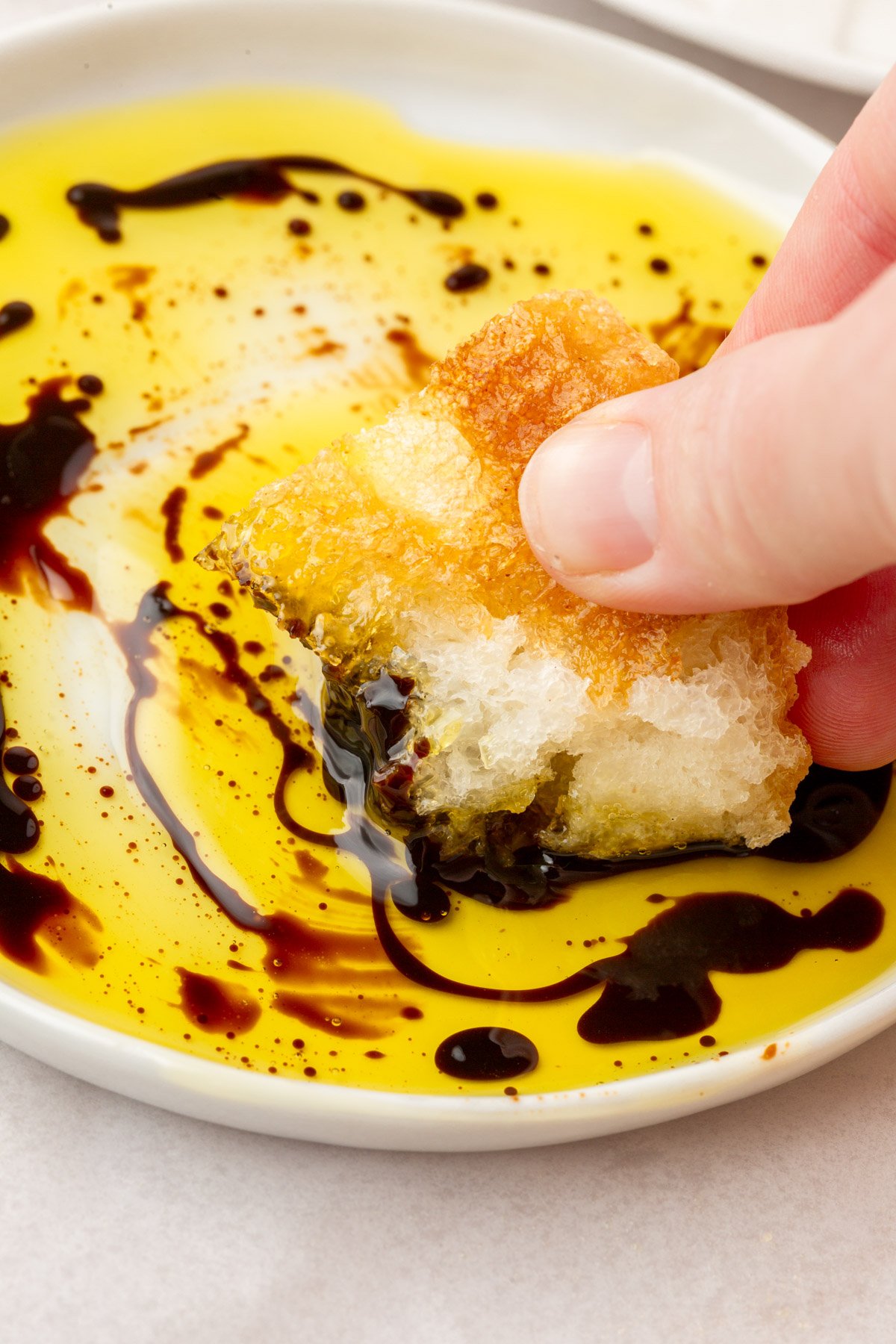
TIP
This dough feels different than wheat-based focaccia — and that’s okay. Gluten-free focaccia dough made with Caputo Fioreglut is sticky — more like thick cookie dough than traditional bread dough. You won’t get the usual stretchy, elastic feel. Resist the urge to add more flour. Just oil your hands, trust the process, and let it rise. The magic happens in the oven.
Storage Instructions
This focaccia is best on the day it’s baked — but you can absolutely freeze it. Slice it first, then freeze in a single layer before transferring to a freezer bag. Reheat in the toaster oven or oven at 375°F until warm and crisp.
Expert Tips
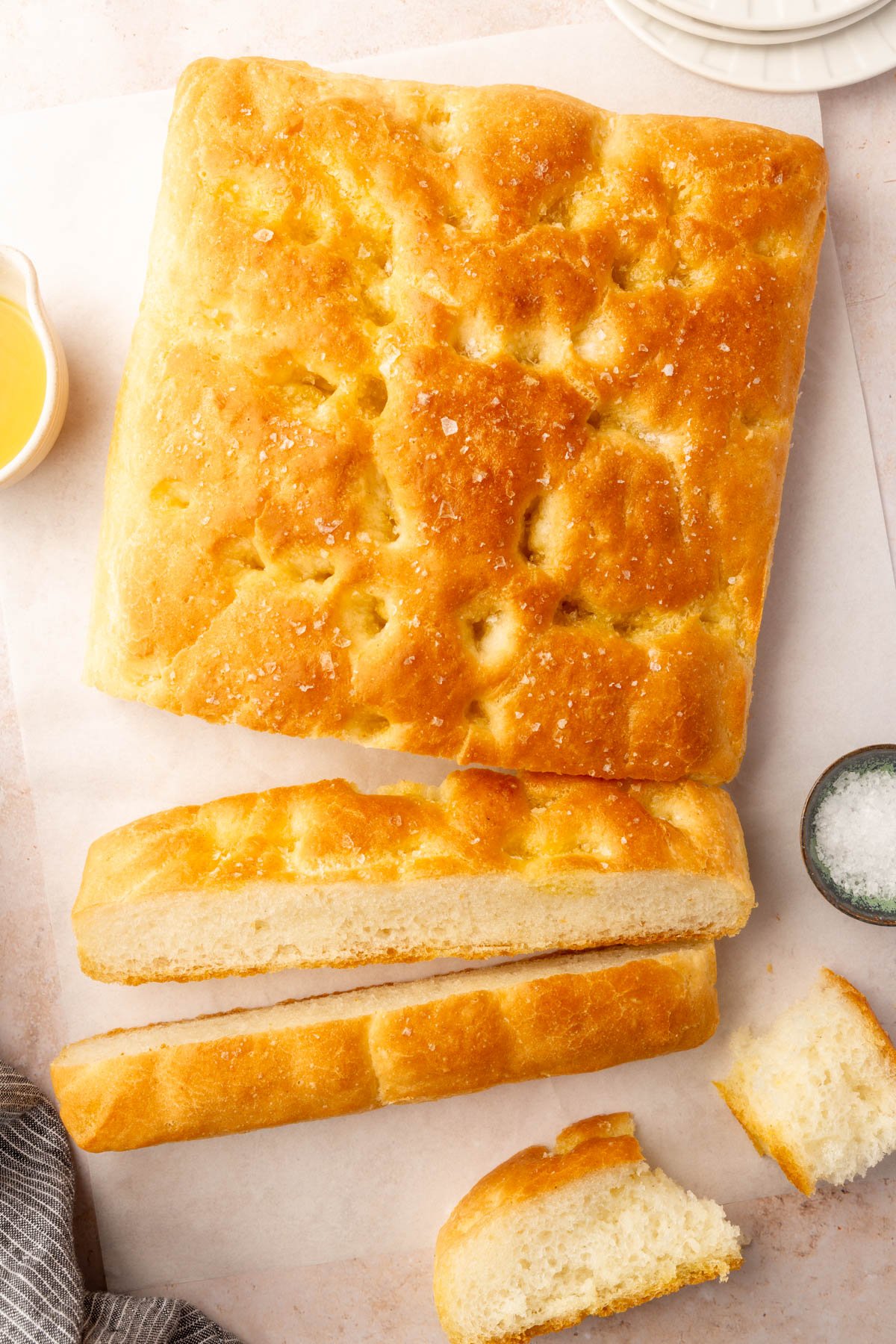
More gluten-free breads to try
Did you make this recipe?
I’d love to know! Please rate it and leave a comment below. You can also share your pictures and tag @adashofmegnut on Instagram.
NOTE: For best results, use a kitchen scale. I’ve listed ingredients by weight in the recipe card with approximate cup measurements in the notes. Gluten-free flours are notoriously inconsistent by volume, so weighing is the most reliable option.

Gluten-Free Focaccia
Ingredients
For the Dough:
- 520 g Caputo Fioreglut Gluten-Free Flour - 4 cups
- 12 g instant yeast - about 4 teaspoons
- 12.5 g granulated sugar - 1 tablespoon
- 12 g kosher salt - 2 teaspoons
- 480 g warm water - 2 cups, 120–130°F
- 42 g extra-virgin olive oil - 3 tablespoons, for in the dough
For the Pan and Topping:
- 42 g extra-virgin olive oil - divided (3 tablespoons total – 1 tablespoon (14g) olive oil for greasing the pan and 2 tablespoons (28g) for drizzling on top)
- 3 g flaky sea salt - 1 teaspoon, I used Maldon salt
**Use the toggle button above to turn the instruction photos on and off!
Instructions
- In the bowl of a stand mixer fitted with the paddle attachment, combine 520g Caputo Fioreglut Gluten-Free Flour, 12 g instant yeast, 12.5g granulated sugar, and 12g kosher salt. Whisk together.
- Add 480g warm water and 42g olive oil. Mix on medium speed for 4 minutes until well combined. The dough will be sticky and thick.
- Oil a 9×13-inch baking pan with 14g/1 tablespoon olive oil. Transfer the dough to the pan and use well-oiled hands to gently spread it into the corners.
- Cover the pan with plastic wrap or a clean kitchen towel and let the dough rise in a warm spot for 1 to 1.5 hours, or until it has doubled in size.
- During the last 30 minutes of rising, preheat the oven to 425°F (220°C).
- Once risen, drizzle the top of the dough with the remaining 21g/2 tablespoons olive oil. Use oiled fingers to gently dimple the dough all over. Sprinkle with flaky sea salt.
- Bake for 23–26 minutes, or until golden on top and the edges have pulled away from the pan.
- Let cool slightly before slicing. Serve warm or at room temperature.
Notes
- Caputo Fioreglut Gluten-Free Flour contains gluten-free wheat starch and is tested to below 20 ppm gluten. It’s safe for most people with celiac disease, but not suitable for those with a wheat allergy.
- I always recommend baking by weight, especially with gluten-free flours. But for convenience, I’ve included volume measurements too.
- This dough is very sticky — more like cookie dough than traditional bread. Resist the urge to add more flour.
- Focaccia is best the day it’s made, but leftovers can be stored in an airtight container for 2–3 days or frozen.
Nutrition
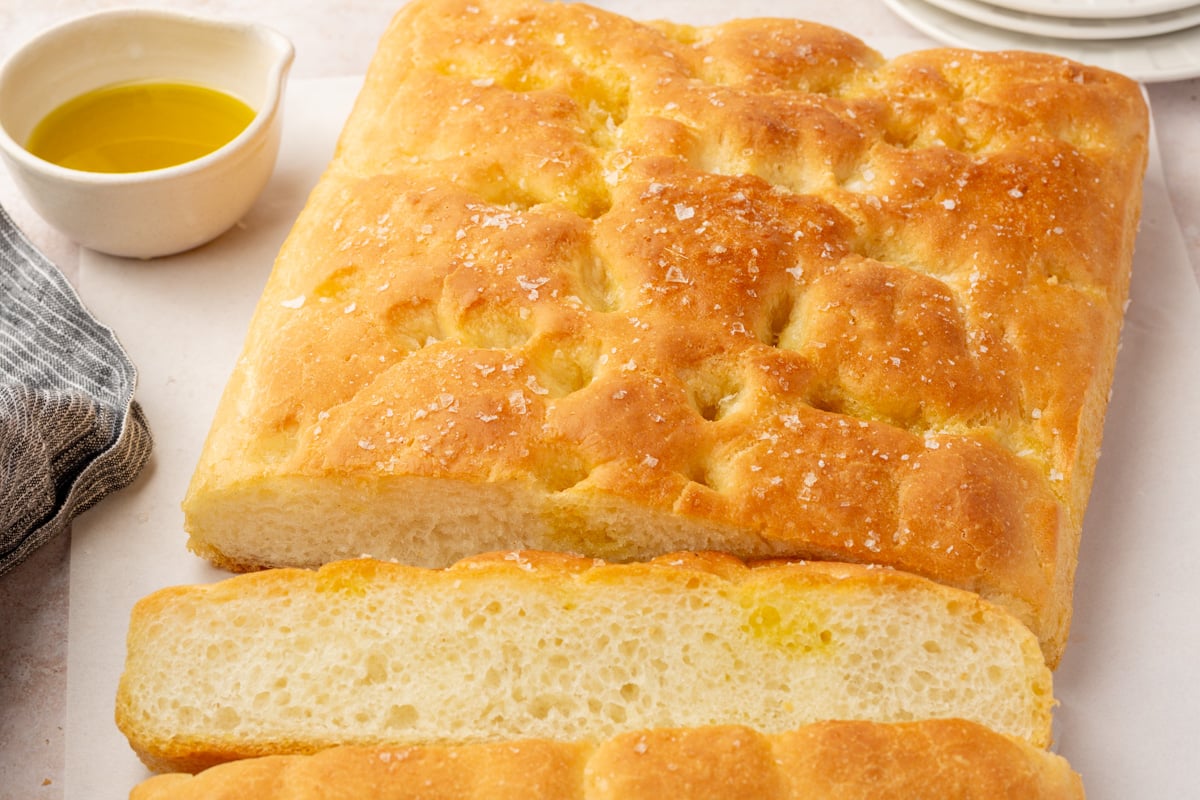

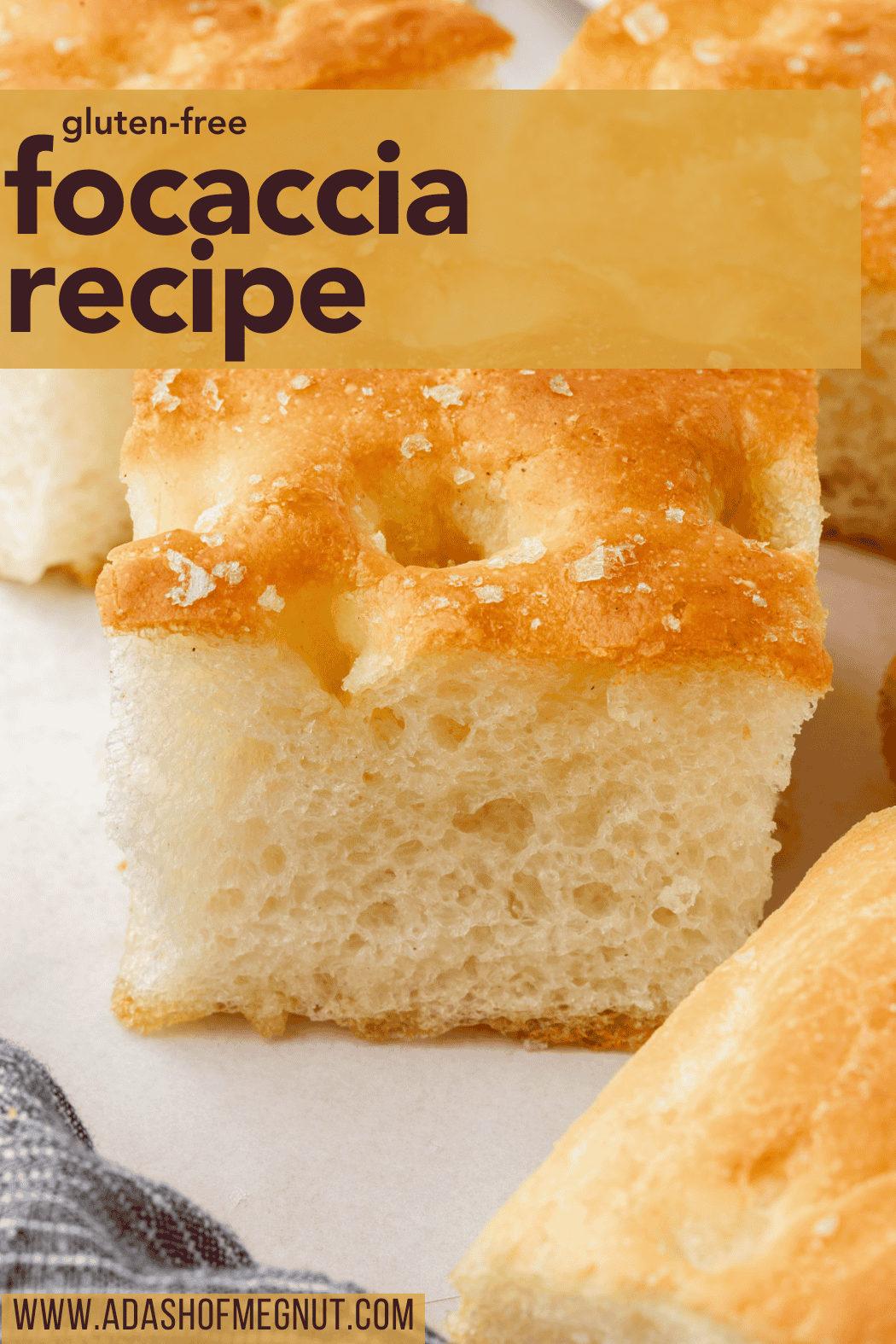
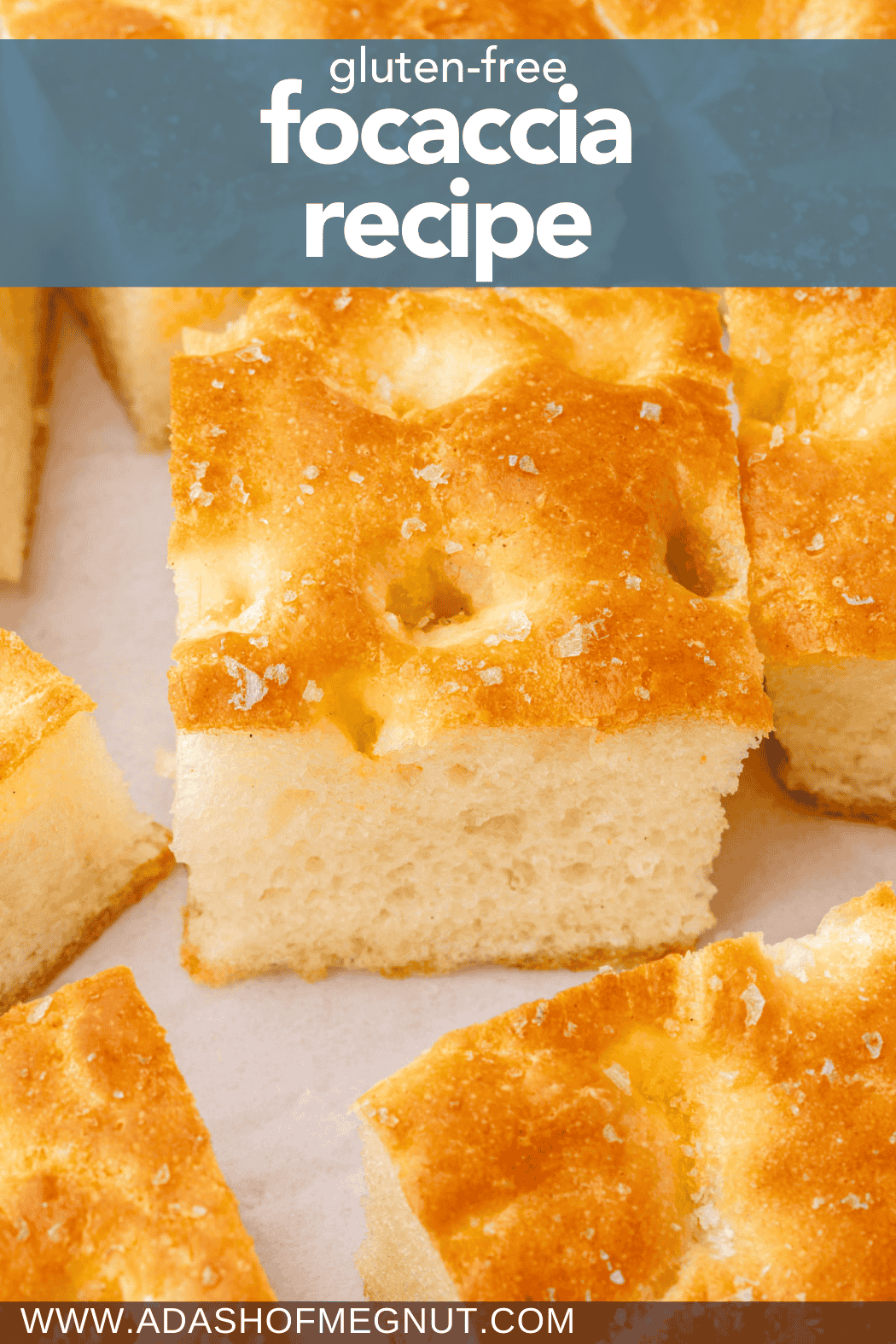
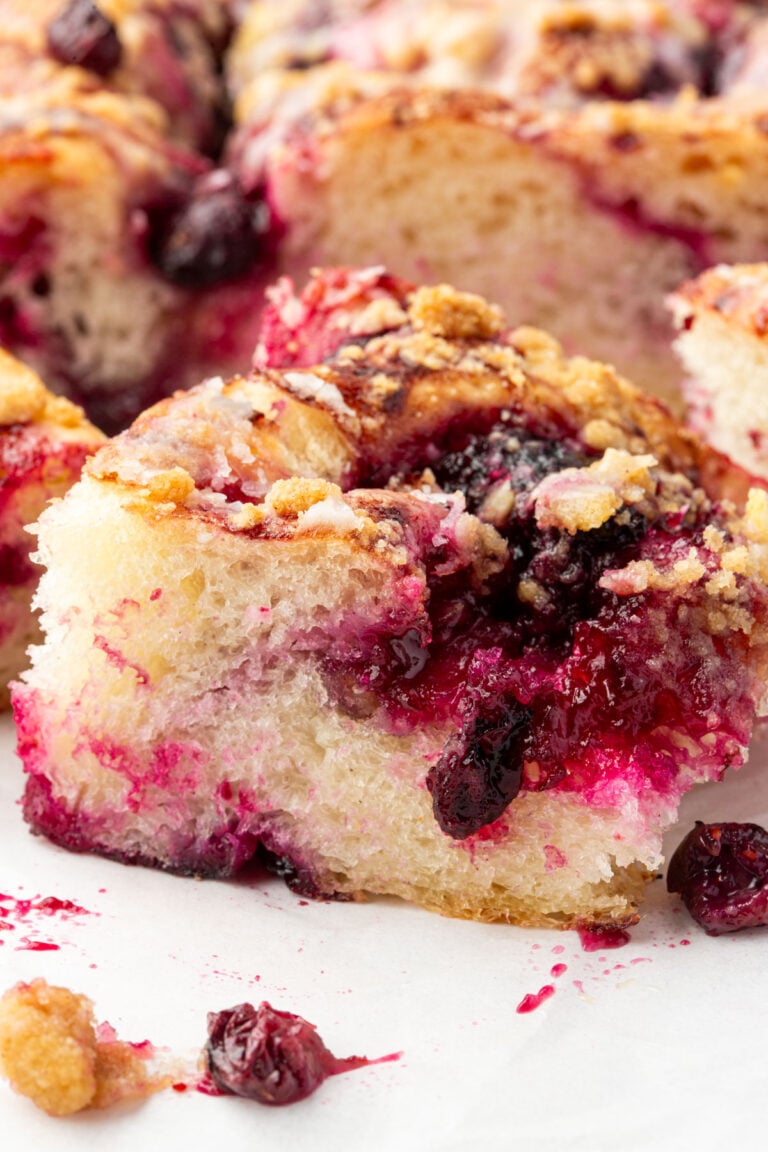
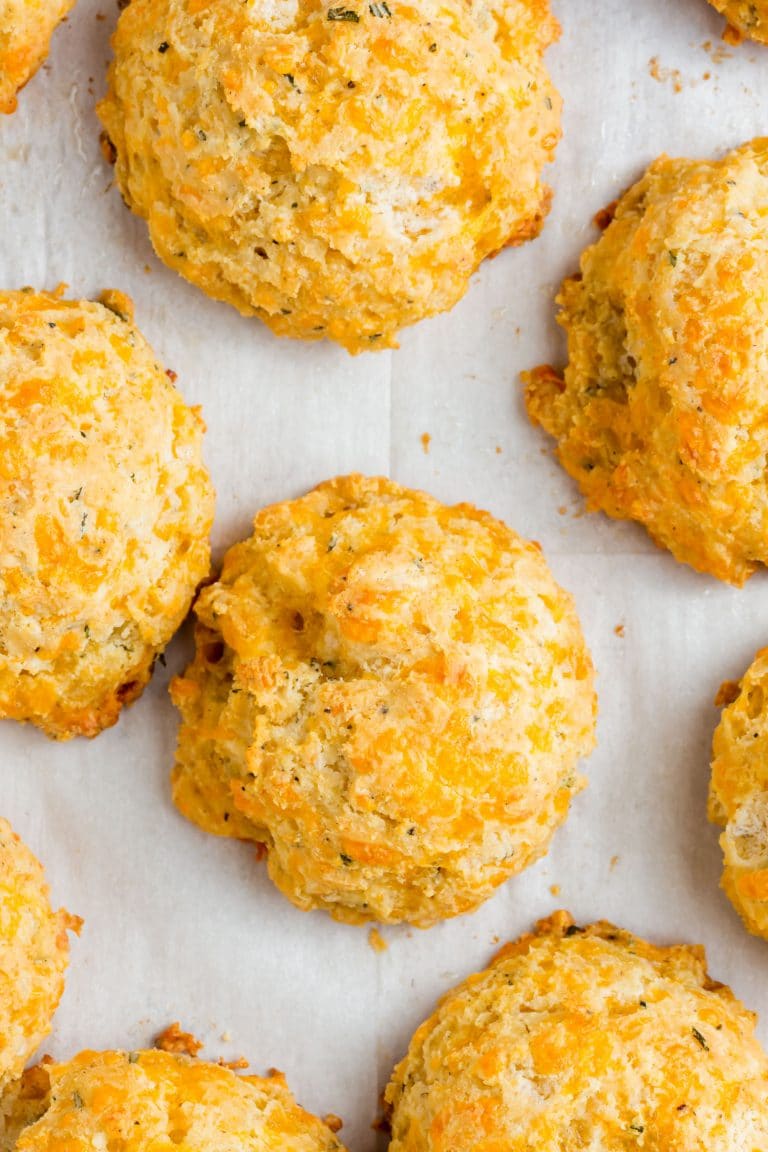
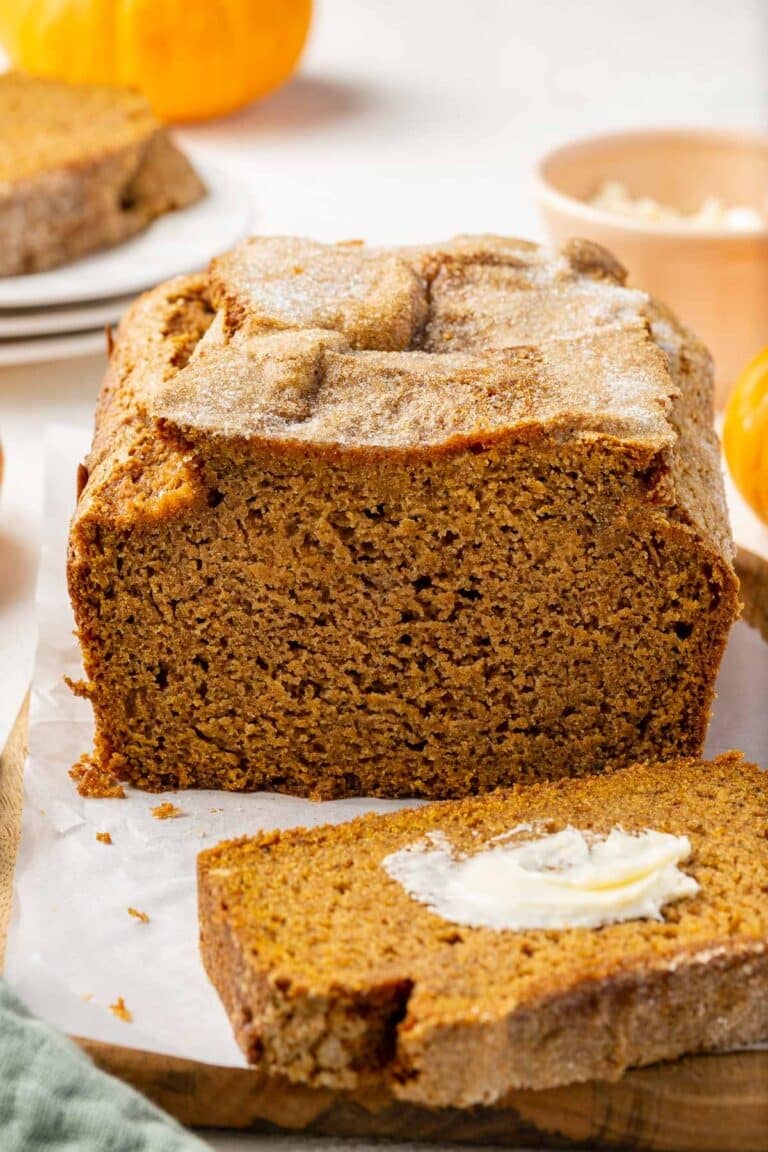
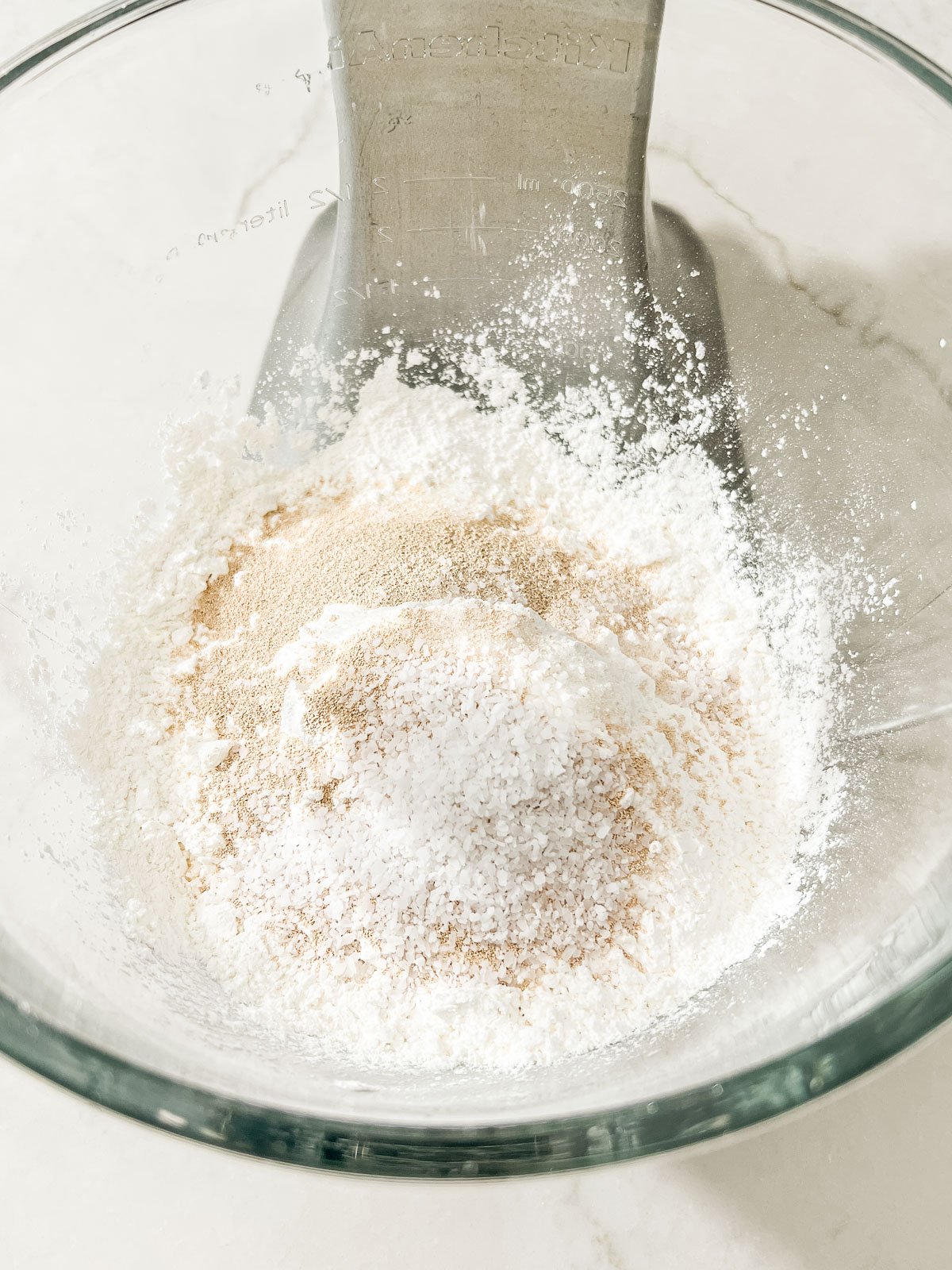
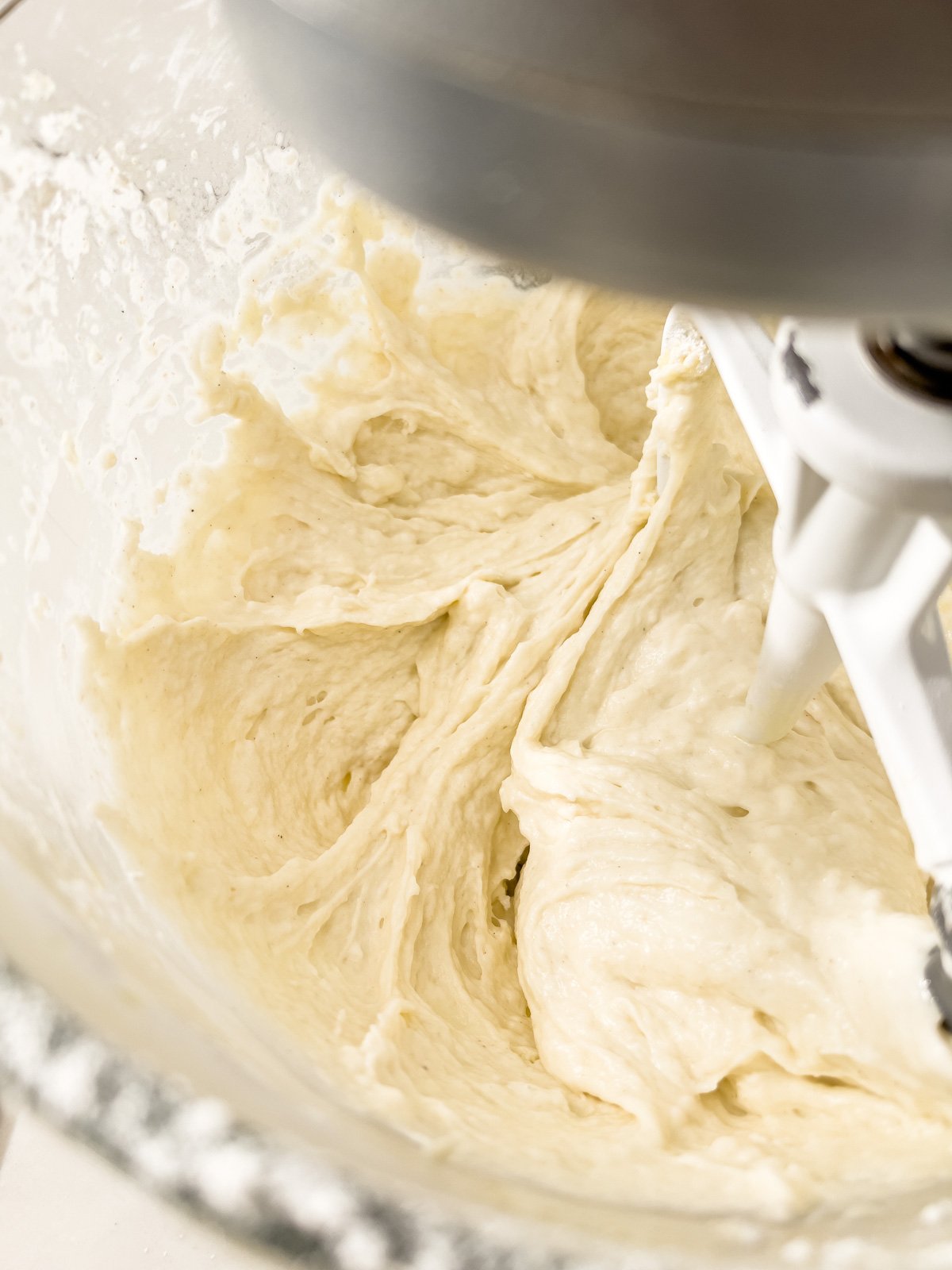

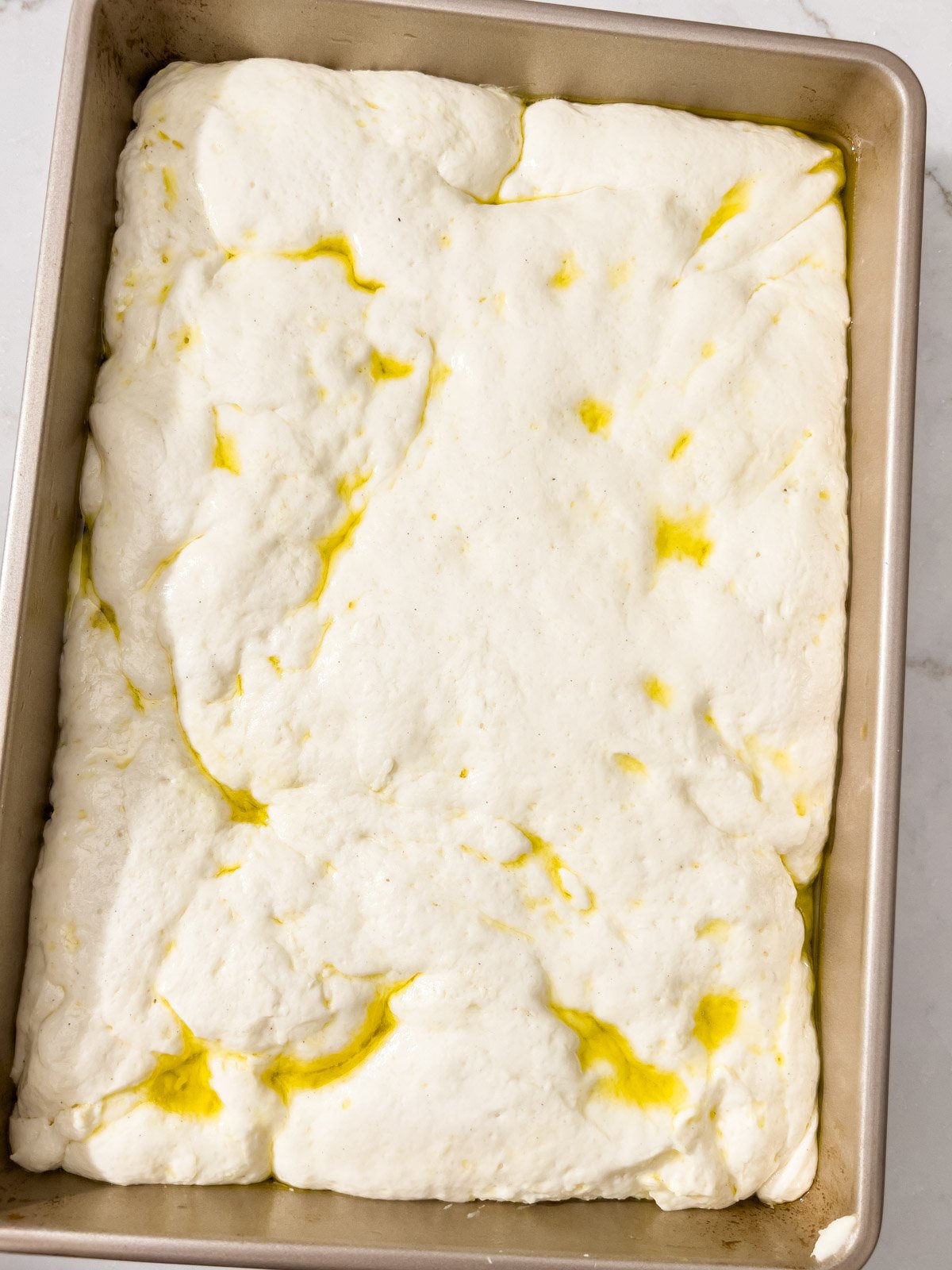
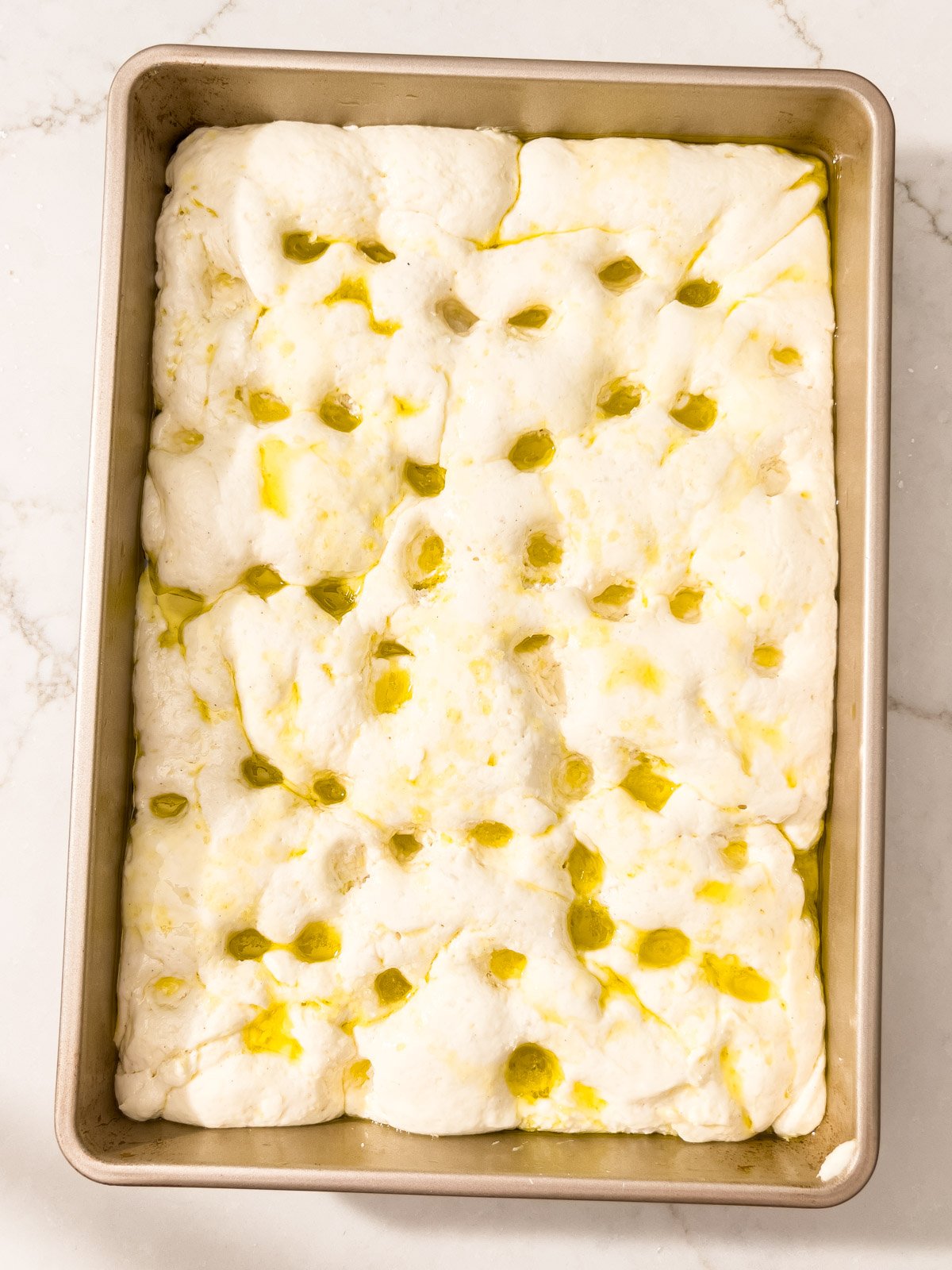
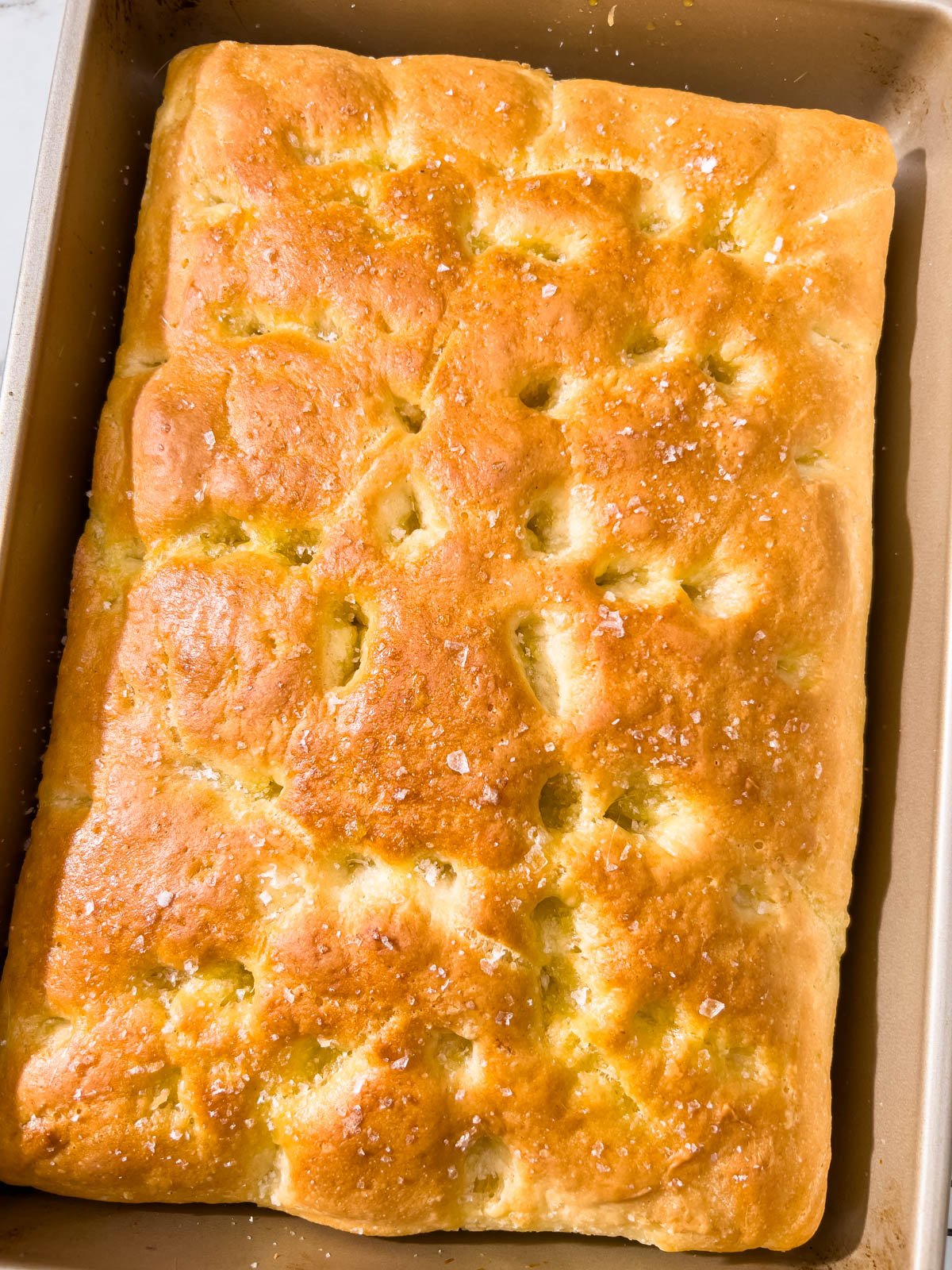

The BEST!!!
Thank you, Elaine!!
You have a follower for life. This is the first real bread my 11 year old has had in years. It is perfection!!
This made my day, Courtney!! This is exactly why I do what I do and test these recipes so much! Let me know if there’s anything else your 11 year old is looking for and I’ll add it to my list!
This was the most amazing gluten free bread I have had. Even my husband who eats regular bread said he wouldn’t have been able to tell if it was GF. Thank you! You have changed sandwiches forever in my house.
I’m so glad, Tessa! We absolutely love this for sandwiches, too! If I’m not going to finish it on the first day, I’ll freeze the leftover focaccia for sandwiches later and it’s the best!
Amazing! Truly delicious focaccia bread.
The recipe is clear and very easy to follow.
Glad you enjoyed it, Maggie!!
The best
Thanks Jennifer!